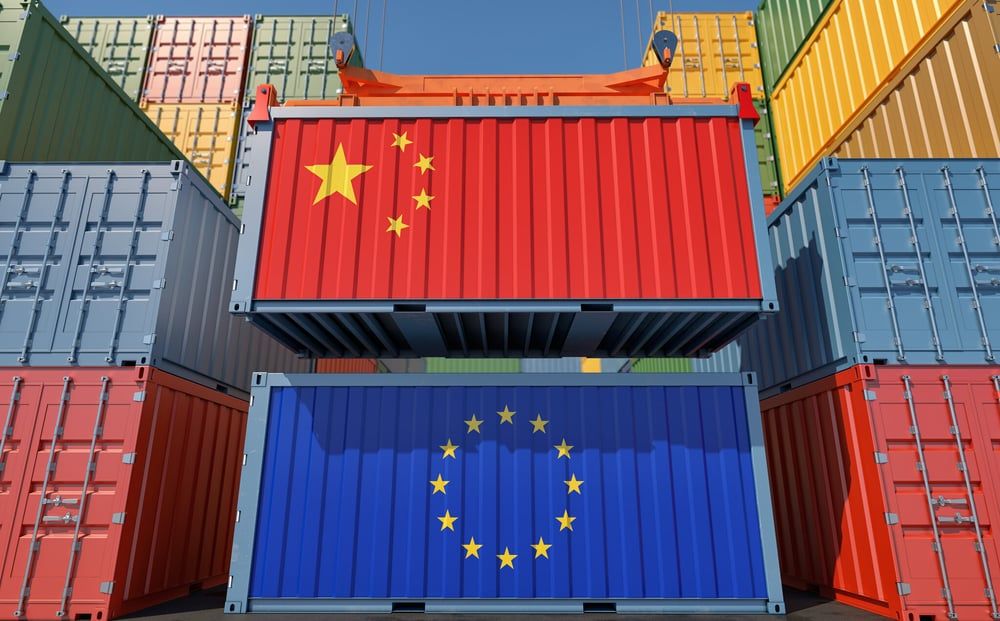Asia Realigns Global Fashion Trade Shifting Focus from US to Europe

A significant shift in global production became evident in the first half of 2024, as Asian manufacturing redirected a substantial portion of its output from the United States to Europe. According to data released by the Institut Français de la Mode (IFM), this reorientation is marked by a notable 19% increase in clothing imports and a 13% rise in textile imports from Asia into the European market during this period. This trend highlights a strategic recalibration in response to evolving geopolitical and trade dynamics.
Following a peak in 2022, European clothing imports had experienced a year-over-year slowdown. However, the first six months of 2024 saw a resurgence, with imports surging by 13% to reach a total of $43.4 billion. This uptick was largely propelled by the prevailing uncertainty surrounding the customs dispute between the United States and the European Union. Of this total, Asian suppliers accounted for a dominant $32.9 billion, underscoring their critical role in fulfilling European demand.
Several major Asian economies recorded substantial growth in their clothing exports to Europe. China led the charge with a 22% increase, followed closely by Bangladesh (+18%), India (+15%), Vietnam (+17%), and Pakistan (+17%). Cambodia demonstrated particularly strong growth, seeing a 30% rise in its exports to the continent. Conversely, Turkey, a traditionally significant supplier, was the only major player to experience a decline, with its exports falling by 7%, contributing to an overall 4% drop in orders from the broader Mediterranean region.
The burgeoning customs dispute between Brussels and Washington had a discernible impact on imports from the United States. After a period of steady growth since 2021, American clothing imports into Europe experienced a pause, declining by 7% during the first half of 2024. This reflects the immediate effects of trade tensions on established supply chains and purchasing patterns.
A parallel trend was observed within the textile sector, where European imports expanded by 8% to reach €16.9 billion. Asian nations were again at the forefront, increasing their shipments by 13% to €10.9 billion. This growth was robustly supported by strong performances from key suppliers such as China, Vietnam, Bangladesh, and Thailand, reinforcing Asia's comprehensive dominance in both clothing and textile supply to Europe.
Despite the overall slowdown in American clothing exports to Europe, the United States managed to increase its textile exports to the EU. These shipments rose by 4% compared to the same period in the previous year, reaching €724 million. This indicates a nuanced trade relationship where certain sectors demonstrate resilience even amidst broader commercial disputes.
On the export front, the European Union faced headwinds in the first six months of the year, with its clothing exports dropping by 3% to €17.3 billion. This continued a downward trajectory observed since the 2022 peak, largely driven by a significant contraction in orders from Asian markets, which fell by 15% to €4.1 billion amidst persistent trade tensions and shifting demand patterns.
Specific declines were recorded across various key Asian markets for EU clothing exports: China saw an 18% fall, Hong Kong dropped by 13%, South Korea by 17%, Singapore by 17%, and Taiwan by 10%. Trade instability also extended to North America, with exports to Canada decreasing by 10% and Mexico by 12%. Notably, exports to the United States, which stands as Europe's third-largest customer, remained stable despite the ongoing customs dispute.
Conversely, the EU found stronger demand in nearby markets. Exports to Ukraine surged by 20%, Serbia by 17%, and particularly to Turkey, which registered a 14% increase and positioned itself as the EU’s fifth-largest customer. In aggregate, exports to Mediterranean countries experienced an encouraging 11% rise, indicating a regional refocus for European exporters.
The textile export sector echoed the general downturn, with EU shipments decreasing by 4% to €13 billion. Exports to Asian countries declined by 14%, mirroring the trend in clothing. However, in contrast to clothing, textile orders from Mediterranean countries remained stable compared to the first half of 2024, offering a point of consistency in an otherwise fluctuating global trade landscape.










